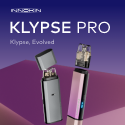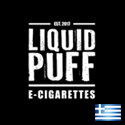Every time I hear about another proposed ban on electronic cigarettes, I scratch my head and wonder why. Why is something that has the potential to save so many lives being met with such fierce opposition. Why? Because of how it looks?
I mean it couldn’t be about money could it? Our government and agencies couldn’t possibly care more about money than the health of it’s citizens could it? That just can’t be… right?
Because with every new report and study, we see more and more proof that vaping electronic cigarettes is a far safer alternative to that of smoking a traditional cigarette. Here is yet another example.
There is a new study out from Drexel University School of Public Health. It was created by Igor Burstyn, PhD. You can read the entire study (PDF file) by clicking THIS link. You can also read additional information and ways to discuss and have questions answered about the study on the CASAA website.
Here are the key conclusions from the study:
- Even when compared to workplace standards for involuntary exposures, and using several conservative (erring on the side of caution) assumptions, the exposures from using e-cigarettes fall well below the threshold for concern for compounds with known toxicity. That is, even ignoring the benefits of e-cigarette use and the fact that the exposure is actively chosen, and even comparing to the levels that are considered unacceptable to people who are not benefiting from the exposure and do not want it, the exposures would not generate concern or call for remedial action.
- Expressed concerns about nicotine only apply to vapers who do not wish to consume it; a voluntary (indeed, intentional) exposure is very different from a contaminant.
- There is no serious concern about the contaminants such as volatile organic compounds (formaldehyde, acrolein, etc.) in the liquid or produced by heating. While these contaminants are present, they have been detected at problematic levels only in a few studies that apparently were based on unrealistic levels of heating.
- The frequently stated concern about contamination of the liquid by a nontrivial quantity of ethylene glycol or diethylene glycol remains based on a single sample of an early technology product (and even this did not rise to the level of health concern) and has not been replicated.
- Tobacco-specific nitrosamines (TSNA) are present in trace quantities and pose no more (likely much less) threat to health than TSNAs from modern smokeless tobacco products, which cause no measurable risk for cancer.
- Contamination by metals is shown to be at similarly trivial levels that pose no health risk, and the alarmist claims about such contamination are based on unrealistic assumptions about the molecular form of these elements.
- The existing literature tends to overestimate the exposures and exaggerate their implications. This is partially due to rhetoric, but also results from technical features. The most important is confusion of the concentration in aerosol, which on its own tells us little about risk to heath, with the relevant and much smaller total exposure to compounds in the aerosol averaged across all air inhaled in the course of a day. There is also clear bias in previous reports in favor of isolated instances of highest level of chemical detected across multiple studies, such that average exposure that can be calculated are higher than true value because they are “missing” all true zeros.
- Routine monitoring of liquid chemistry is easier and cheaper than assessment of aerosols. Combined with an understanding of how the chemistry of the liquid affects the chemistry of the aerosol and insights into behavior of vapers, this can serve as a useful tool to ensure the safety of e-cigarettes.
- The only unintentional exposures (i.e., not the nicotine) that seem to rise to the level that they are worth further research are the carrier chemicals themselves, propylene glycol and glycerin. This exposure is not known to cause health problems, but the magnitude of the exposure is novel and thus is at the levels for concern based on the lack of reassuring data.














 Store
Store












